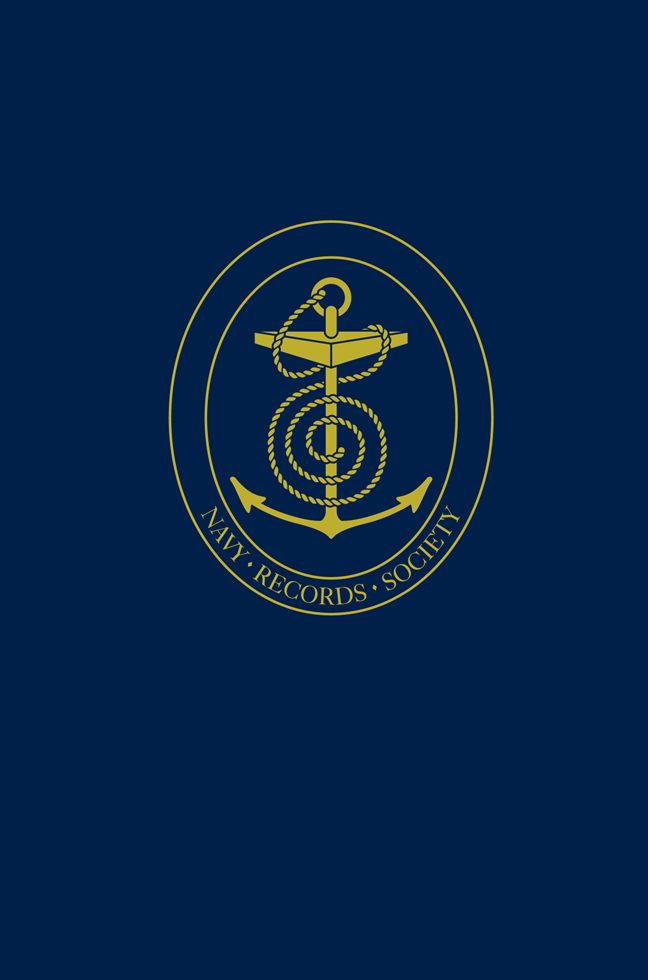Book contents
- Frontmatter
- Dedication
- Contents
- List of Plates
- Preface
- List of Abbreviations
- I The Provision of Ships for Edward I's Campaigns in Scotland, 1300–1306: Barges and Merchantmen
- II Lord Admiral Lisle and the Invasion of Scotland, 1544
- III The Journal of the Voyage of the Marigold to Iceland, 1654
- IV Neutrality, Sovereignty and Jurisdiction: Two Cases in the Admiralty Court, 1798–1805
- V The Supply of Timber for the Royal Navy, c.1803–c.1830
- VI The Journal of Lieutenant George Bedford, 1835–36: Surveying on the West Coast of Africa
- VII The Journal of Lieutenant Charles Knowles in the River Niger, 1864
- VIII The Diary of Signal Bosun Henry Eason: The Naval Brigade in the Zulu War, 1879
- IX The Autobiography of Chief Gunner Alexander Grant: HMS Lion at the Battle of Jutland, 1916
- X Australian Naval Defence: Selections from the Papers and Correspondence of Captain W. H. C. S. Thring, 1913–34
- XI The Relief of Admiral North from Gibraltar in 1940
- XII The Development of an Independent Navy for Australia: Correspondence between the First Naval Member and the First Sea Lord, 1947–59
- Contents of Previous Naval Miscellany Volumes
- Index
- Miscellaneous Endmatter
X - Australian Naval Defence: Selections from the Papers and Correspondence of Captain W. H. C. S. Thring, 1913–34
Published online by Cambridge University Press: 05 March 2024
- Frontmatter
- Dedication
- Contents
- List of Plates
- Preface
- List of Abbreviations
- I The Provision of Ships for Edward I's Campaigns in Scotland, 1300–1306: Barges and Merchantmen
- II Lord Admiral Lisle and the Invasion of Scotland, 1544
- III The Journal of the Voyage of the Marigold to Iceland, 1654
- IV Neutrality, Sovereignty and Jurisdiction: Two Cases in the Admiralty Court, 1798–1805
- V The Supply of Timber for the Royal Navy, c.1803–c.1830
- VI The Journal of Lieutenant George Bedford, 1835–36: Surveying on the West Coast of Africa
- VII The Journal of Lieutenant Charles Knowles in the River Niger, 1864
- VIII The Diary of Signal Bosun Henry Eason: The Naval Brigade in the Zulu War, 1879
- IX The Autobiography of Chief Gunner Alexander Grant: HMS Lion at the Battle of Jutland, 1916
- X Australian Naval Defence: Selections from the Papers and Correspondence of Captain W. H. C. S. Thring, 1913–34
- XI The Relief of Admiral North from Gibraltar in 1940
- XII The Development of an Independent Navy for Australia: Correspondence between the First Naval Member and the First Sea Lord, 1947–59
- Contents of Previous Naval Miscellany Volumes
- Index
- Miscellaneous Endmatter
Summary
Although relatively brief, the Australian career (1913–22) of Captain Walter Hugh Charles Samuel (Hugh) Thring is of more than passing interest; not least because his major achievements were intellectual and have long gone unrecognised in his adoptive Service. Arguably the early Royal Australian Navy's (RAN) most accomplished strategic thinker, he was undoubtedly a key figure in readying the fledgling navy for the onset of the First World War, and would eventually become responsible for practically all its wartime administration. Described in 1918 as a ‘clever, silent well-informed man’, he was also an inveterate inventor and prolific writer, with particular interests in Pacific affairs, the history of trade routes and the technology of Naval warfare.
Born in Wiltshire on 30 May 1873, Hugh Thring was the ninth child of the Reverend John Thring and his wife Lydia. Entering the Royal Navy via HMS Britannia in 1886, he earned 12 months time-gained on graduation and then served in the Channel, Pacific and China Squadrons. Recognised early as a zealous and promising officer, Thring followed qualification in gunnery with an appointment to command the new ‘Thirty-Knotter’ destroyer HMS Desperate, later taking part in Queen Victoria's Diamond Jubilee Review. In 1900 he was serving in the Mediterranean as Lieutenant (G) in HMS Revenge when the spontaneous ignition of a cordite charge threatened to spread to the remainder of the magazine. Thring's conduct in entering the fume-filled compartment to prevent a further explosion received written praise from the Admiralty. An accomplished draughtsman and engineer, in 1902 he also designed one of the first ‘rate of change of range’ instruments to be used at sea. Promoted commander in 1903, Thring followed a staff appointment with several years as second-in-command of HMS Vengeance, serving on the China Station until the end of the Russo-Japanese War. He joined Admiral Lord Charles Beresford's staff in 1908 and the next year his zeal and ability again received special mention, after the adoption of his ‘rate of change of bearing’ lines for the Dumaresq rate of change instrument. Thring went on to complete the Naval War Course, but his promising career thereafter faltered in the wake of bouts of ill-health and the ongoing fallout from the dispute between Beresford and the First Sea Lord, Admiral Sir John Fisher. In the promotion list for 30 December 1910 seven officers were promoted over his head from the Commanders’ list.
- Type
- Chapter
- Information
- The Naval Miscellany , pp. 407 - 462Publisher: Boydell & BrewerFirst published in: 2024



